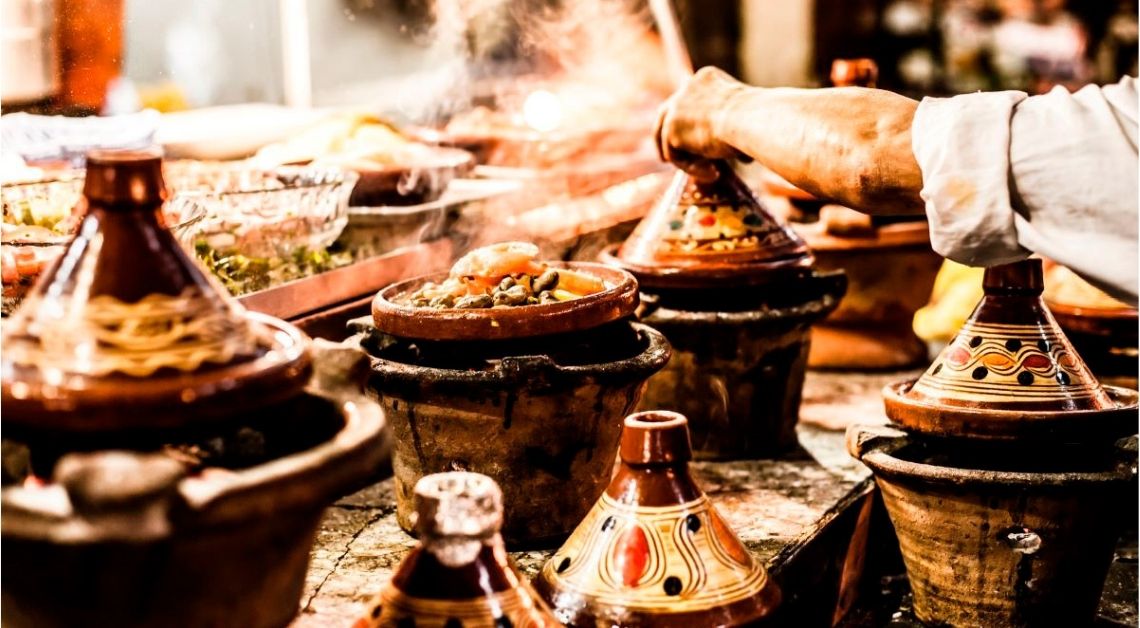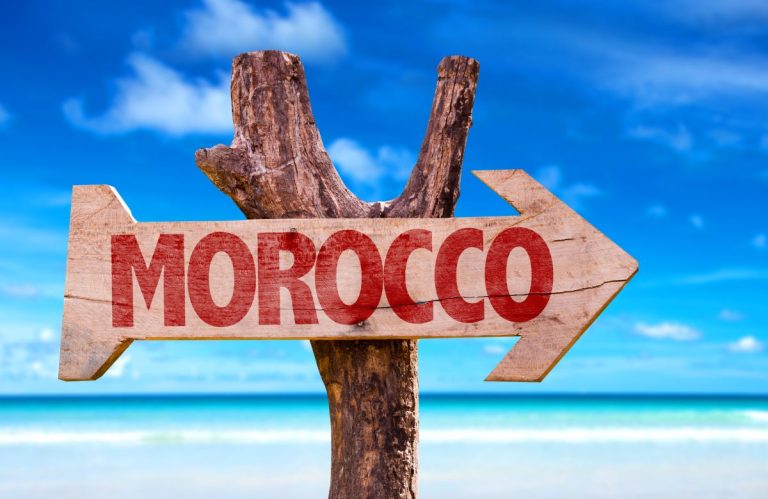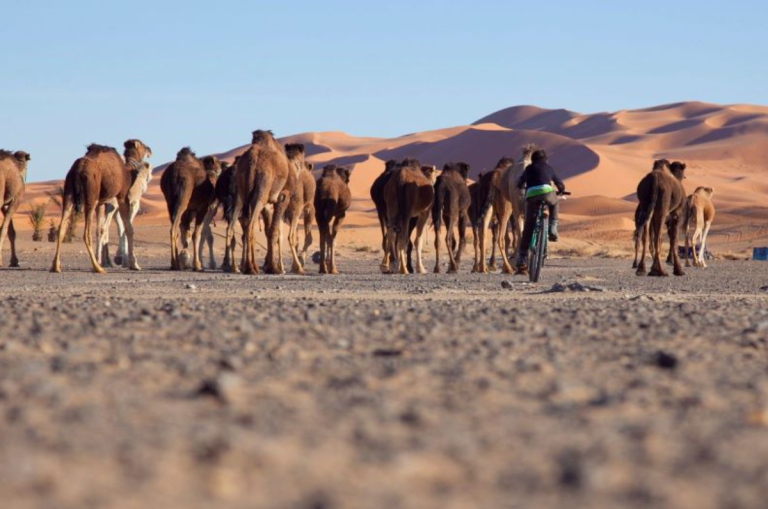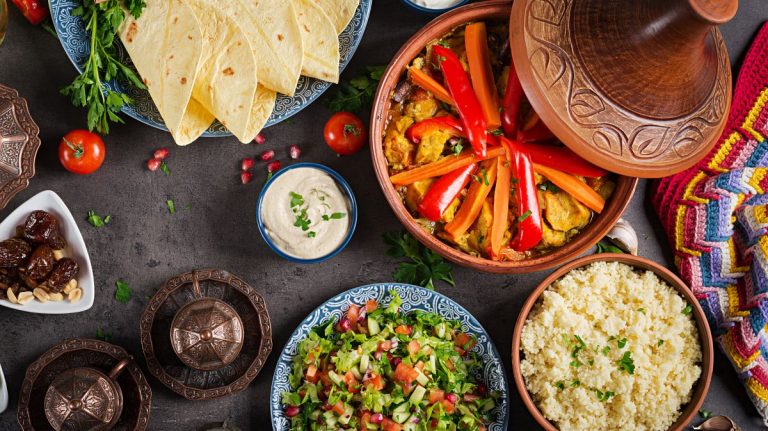On some occasions we have told you how many civilizations have passed through this country over the centuries and that each one has left its trace. Well, that is precisely what you will find in Moroccan gastronomy.
They have managed to take the best of each of these cultures and have integrated it into their cuisine, which mixes Berber, Moorish, Middle Eastern, Mediterranean and African cuisines.
What is the result?
Tasty and diverse dishes with lots of colors and aromas.
Moroccan gastronomy is part of the experience of coming to Kam Kam Dunes because we are fascinated by its flavors and workmanship but, above all, because in our kitchen we have local chefs in charge who know the field better than anyone else.
With their help we have made a guide with the essentials about Moroccan gastronomy, which is one of the charms of this country.
Let’s get down to business
What is Moroccan cuisine like?
Moroccan cuisine is familiar and homemade because traditionally women have been (and still are) the great cooks of the country who have been transmitting recipes from generation to generation. That is why it is difficult to find extensive recipe books, because knowledge is passed on verbally.
That is not a problem for us because at Kam Kam Dunes we have local chefs who carry the most authentic Moroccan cuisine in their veins.
Although we will soon go into what ingredients are essential to Moroccan cuisine and its most popular dishes, we could reduce it to three main characteristics that will help you recognize it in no time:
- The use of spices is a must; if it does not contain spices, it is not Moroccan.
- It is very common to use the tajin: an earthenware container with a conical lid.
- It is common to mix sweet and salty. VERY common.
To these three tips add tea (for sure) which is not a dish but an omnipresent element in their meals and in their philosophy of life.
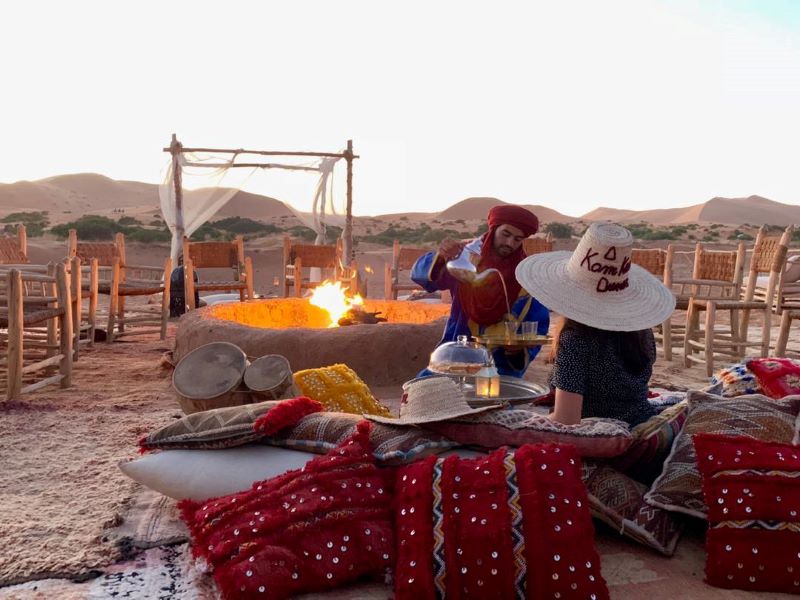
Now that we have this general plan of the Moroccan kitchen, let’s go into detail:
As we have said before, Moroccan gastronomy is influenced by several cultures that can be seen in its delicacies and that at times are like Mediterranean or African cuisine.
Within this diversity, seasonal fruits and vegetables are always present in salads, stews, juices and smoothies. You will not be surprised when we tell you that the main vegetables are eggplant, tomatoes, onions and carrots. And don’t forget the garlic.
¿What about fruits? Melon and grapes are eaten assiduously in Morocco, but dates and nuts take the cake. You can’t and shouldn’t come and not try dates… too good to be true.
In Moroccan stews, in addition to vegetables in abundance, you will see lamb and chicken meat above all. Beef is much less frequent although it is also present in some recipes.
As for fish and seafood, the truth is that in coastal areas it is used more, but in the interior it is not seen too many times.
And for seasoning, as we said, they use spices in all their dishes without exception. The most used are cinnamon, cumin, turmeric, ginger, black pepper, paprika, anise seeds, saffron and mint. Imagine the aroma of a dish with a combination of several of these products.
Another thing they share with the Mediterranean diet is the use of olive oil for cooking as well as the oil extracted from the argan nuts so typical here.
And we cannot forget olives: in Morocco there are many varieties, and they are included in countless recipes.
To end the section dedicated to ingredients, we must mention honey and almonds, which are the basis of most of its desserts and other specialties of Moroccan gastronomy.
Typical dishes of Moroccan gastronomy
With all that we have just told you, we are sure you are already salivating. Well, wait until you see what dishes you can prepare with these super-ingredients.
Let’s start by saying that Moroccan gastronomy has a huge number of starters, main courses, salads and sweets that would not fit in a post, they would need a whole book. That’s why we have selected the most, most, most famous and that trying them in their land of origin is a must, because they taste like nowhere else.
And the chosen ones are…
Moroccan Tajin
Tajine is used equally to mention the characteristic clay pot in which it is served (the one we mentioned with the conical lid) and the dish itself, which is surely the maximum representative of Moroccan gastronomy.
A tajin is a stew that is cooked in a clay pot and served very hot and in quite abundant portions.
It is a delicacy with a base of vegetables that can be accompanied by fruits, olives, chicken, or lamb meat and all cooked on the fire well loaded with spices, and even honey giving it that sweet point of which we spoke before.
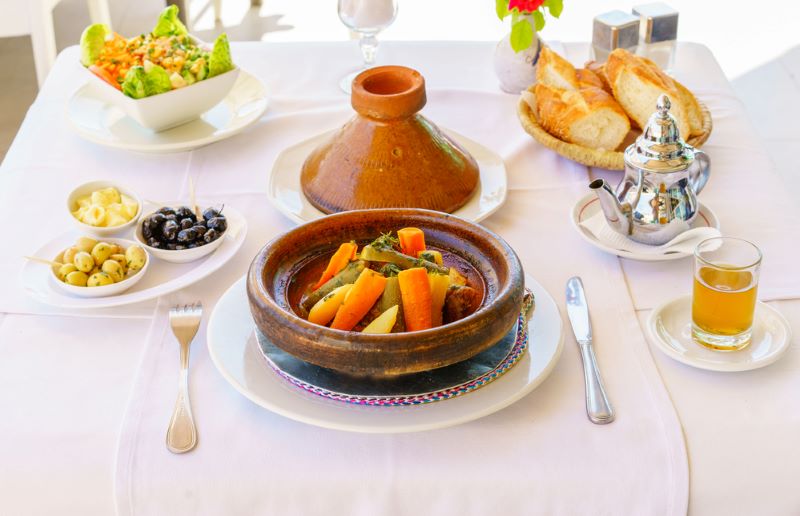
Couscous
Couscous is serious business: it is a fine semolina that accompanies a powerful stew and that you can mix in the dish so that all the semolina is impregnated with the sauce.
The best-known version of couscous has lamb, eggplant, zucchini, carrots, potato and cabbage. It may remind you of the stew made in Spain, only there it is usually made with rice or noodles instead of semolina.
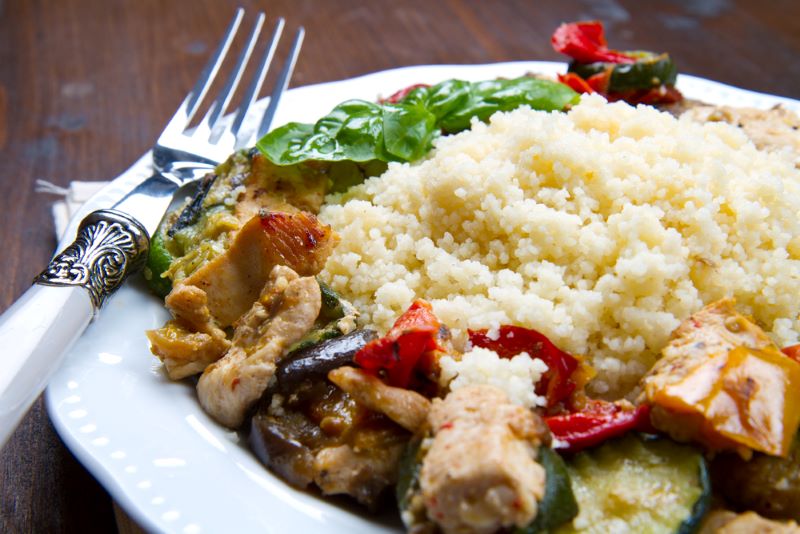
Meat skewer
One of the charms of coming to Morocco is to eat at one of its street stalls. And the star dish is the meat skewers.
Leave at home the prejudices of eating in the street because you will miss wonders of Moroccan gastronomy as these skewers of spicy meat made on the grill. When you eat them warm and freshly made, you forget everything.
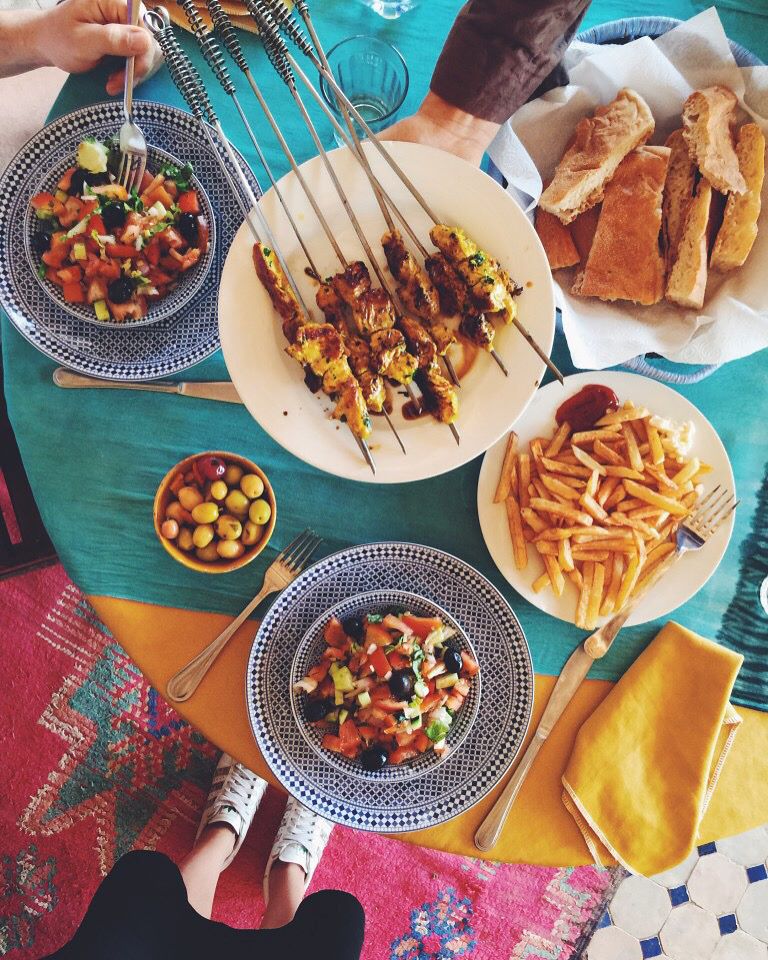
Moroccan desserts
We cannot end without mentioning Moroccan desserts.
Moroccan gastronomy is so rich in sweets that they would deserve a post just for them: delicious specialties made mostly with honey and almonds that are perfect for after meals or to accompany a tea.
In today’s selection we are going to stay with the chebakia, a marvel of pastry that consists of strips of dough rolled in a very peculiar way, coated with honey and sesame seeds and fried. We know, unreal.
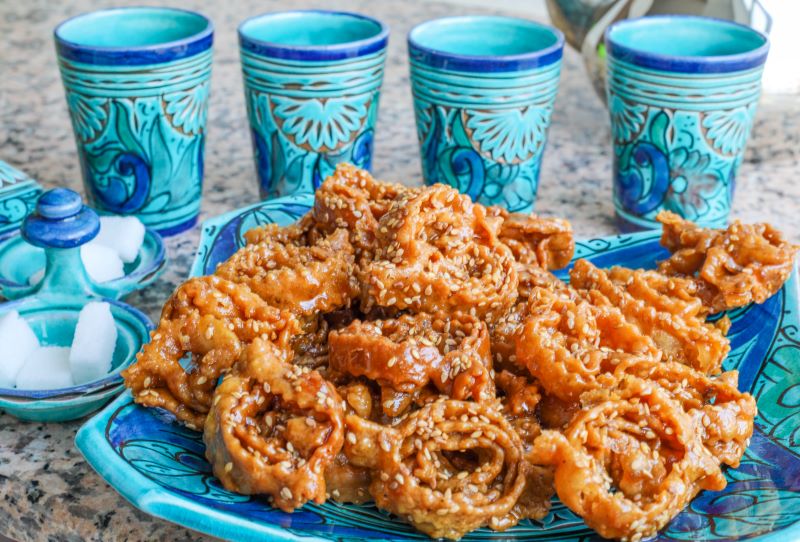
Moroccan gastronomy as part of your experience
You will agree with us that the cuisine of a country is one of the best ways to get to know it because behind the elaboration and the ingredients is a good part of the identity of a culture.
As you have seen, in the case of Moroccan gastronomy this is 100% true. That is why in Kam Kam Dunes we strive to offer typical dishes made with the best ingredients that complete your experience in the desert.
Enjoy your meal!


